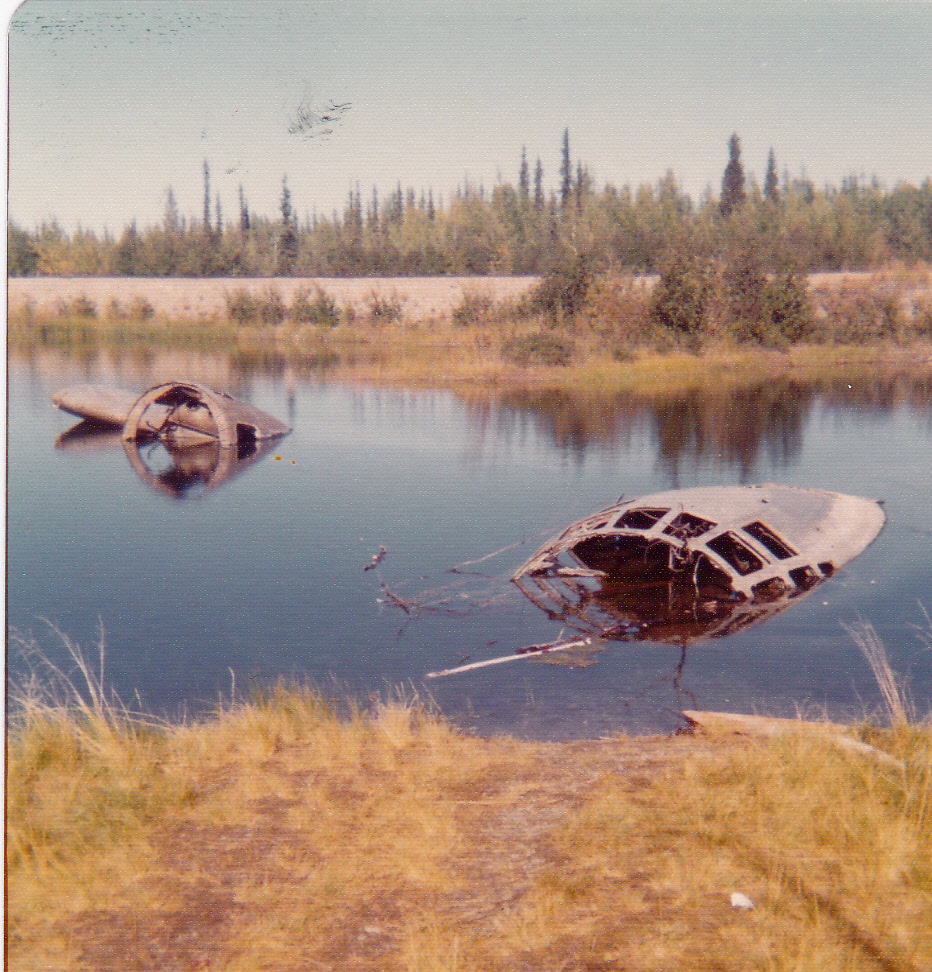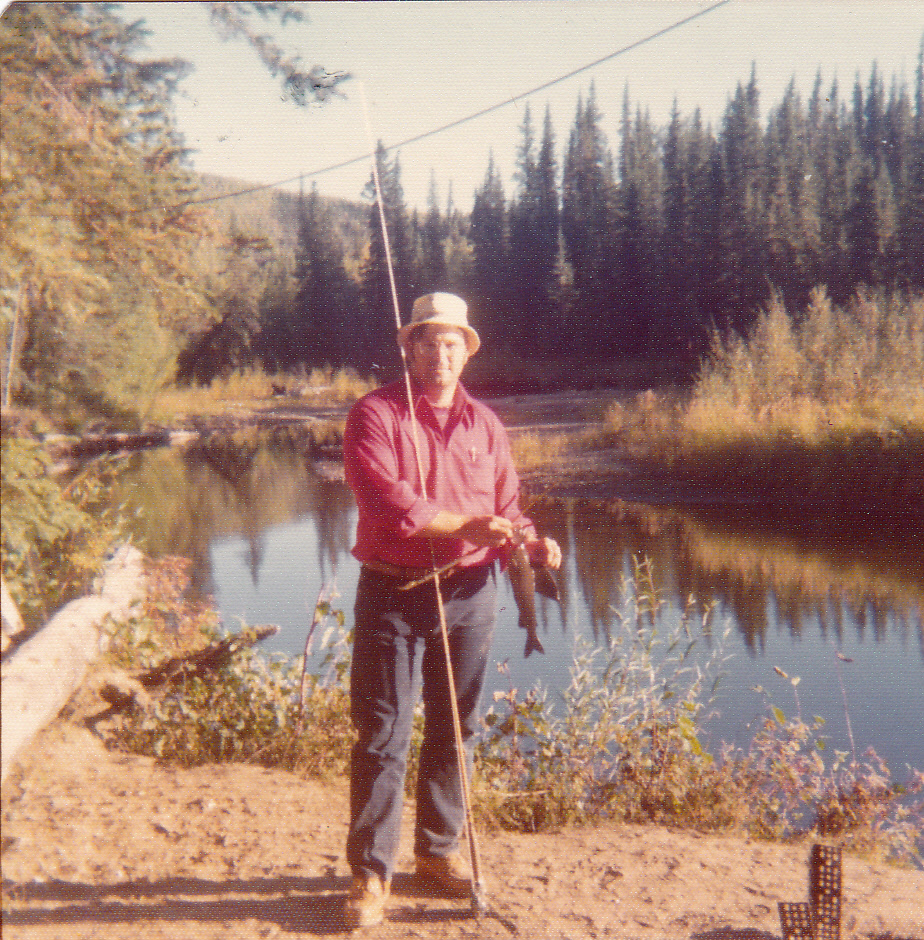

 |
 |
| B-25 Lady of the Lake | Lou Nyber, USN Sec Gru |
In a large, remote, gravel pit near B Battery Road on Eielson AFB, at that time home to the 6965th Security Squadron, sat the derelict remains of a B-25 locally known as Lady of the Lake. She had reportedly come to rest there following a 1955 training accident, and she was usually covered by water with only wingtips, upper engine cowlings, and a portion of the cockpit canopy showing. The gravel pit had no obvious water source; no creek or river flowed into or out of it. Water level, which did seem to fluctuate seasonally, was presumably maintained by ground water pressure, seasonal rains, and the action of spotty, underlying permafrost.
It was a very sterile gravel pit with few water insects, no cattails or bulrushes, hardly any other water plants, only a little algae, and perhaps a frog or two. There were never any fish seen there. With little of interest to see except for the Lady of the Lake, "once was enough."What better place, then, to send a Naval Security Group (NSG) aircrewman who wanted to experience the wonder of Alaskan fishing?
The campground was built to accommodate summer arctic grayling (Thymallus arcticus) fishermen and Sourdough Creek rafters and canoers. It is not open during the winter, but we - with three four-wheel drive vehicles - forced our way through the knee-deep snow and came to a stop in a head-to-tail semicircle, not unlike an old western wagon train circling for night time safety against marauders.
In those early 70s days, Lou Nyber was both airborne and submarine qualified. He was an experienced Russian linguist and a Morse Code operator who had been recently assigned to the 6985th for an inter-service cooperation mission to assist in the exploitation of intelligence valuable to the US Navy. Like most of his NSG compatriots, he was a very, very capable technician, and he was a kind and friendly person to boot. But he was, after all, Navy.
We do not ever want it said that any USAFSS airborne unit failed to cooperate with its sister service, and at Eielson we always "aimed to please."That's why, when Lou begged to go fishing, he was quickly outfitted with fly rod and reel, given some hand-tied flies, and taken to the Lady of the Lake to try his hand at catching Arctic Grayling (Thymallus arcticus) which, at that time, was not even been classified as a game fish by the Alaska Department of Fish and Game!
Lou's 6985th guide fished as hard as he ever had, playing along with the secret joke which would soon humble this new, sister service technician. Lou asked meaningful questions about the Arctic Grayling, how to best catch and cook the species. He demonstrated a very polished ability to fly cast and was greatly enjoying the outing.
All of a sudden, Lou let out a navy whoop of surprise, and the gravel pit waters exploded with froth and spray. He reeled in a grayling of about 14"and was tickled to death. He quickly freed the grayling, turning it back to the Lady of the Lake's preserve, and went about casting for another. Damned if Lou hadn't hooked a fish where there were supposed to be no fish!
Now what was the guide supposed to do? What were the 6985th guys who were in on the "spoof" going to do? They were waiting to give a good-natured mocking of their compatriot's fishing skills. The guide, with instantaneous aplomb, congratulated Lou and asked if he could borrow a mosquito fly to replace his own unsuccessful bumble bee. Lou gladly complied. The US Navy obviously believes there is great wisdom in the old saying, "Give a man a fish, and you feed him for a day. Teach a man to Fish, and you feed him for a lifetime."(Lao-Tzu and others. Origin contested.)
Both fishermen noticed that the small grayling stayed near their feet, swimming expectantly. Obviously, the thing to do was to try to catch the same fish again, and so they did. Until the waning light drove them home, these two sister service brothers caught the same little grayling over and over, each catch eliciting shouts of wonder and joy.